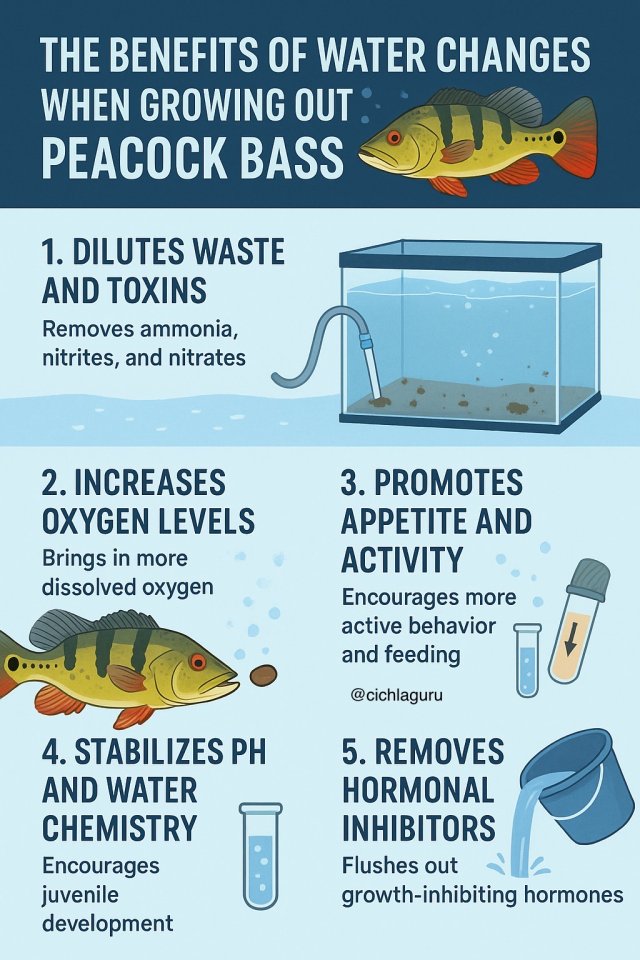Water changes are crucial for growing out Peacock Bass quickly and healthily in an aquarium. Here’s how they help:
1. Dilutes Waste and Toxins
• Peacock Bass produce a lot of waste, especially when fed heavily for growth.
• Frequent water changes remove ammonia, nitrites, and nitrates, preventing stress or stunted growth.
2. Increases Oxygen Levels
• Fresh water brings in more dissolved oxygen, which supports higher metabolism and faster growth rates.
3. Promotes Appetite and Activity
• Clean water encourages more active behavior and feeding, which leads to better growth over time.
4. Stabilizes pH and Water Chemistry
• Consistent water parameters reduce stress and promote stable biological functions, which are critical for juvenile development.
5. Removes Hormonal Inhibitors
• Fish release hormones into the water that can inhibit the growth of others in the same tank. Water changes flush these out, giving all fish a fair chance to grow.
⸻
Best Practice Tip:
For growing Peacock Bass aquarium, aim for 30–50% water changes 2 times a week (Depending On Stock) Especially if feeding heavily with high-protein foods.

1. Dilutes Waste and Toxins
• Peacock Bass produce a lot of waste, especially when fed heavily for growth.
• Frequent water changes remove ammonia, nitrites, and nitrates, preventing stress or stunted growth.
2. Increases Oxygen Levels
• Fresh water brings in more dissolved oxygen, which supports higher metabolism and faster growth rates.
3. Promotes Appetite and Activity
• Clean water encourages more active behavior and feeding, which leads to better growth over time.
4. Stabilizes pH and Water Chemistry
• Consistent water parameters reduce stress and promote stable biological functions, which are critical for juvenile development.
5. Removes Hormonal Inhibitors
• Fish release hormones into the water that can inhibit the growth of others in the same tank. Water changes flush these out, giving all fish a fair chance to grow.
⸻
Best Practice Tip:
For growing Peacock Bass aquarium, aim for 30–50% water changes 2 times a week (Depending On Stock) Especially if feeding heavily with high-protein foods.



